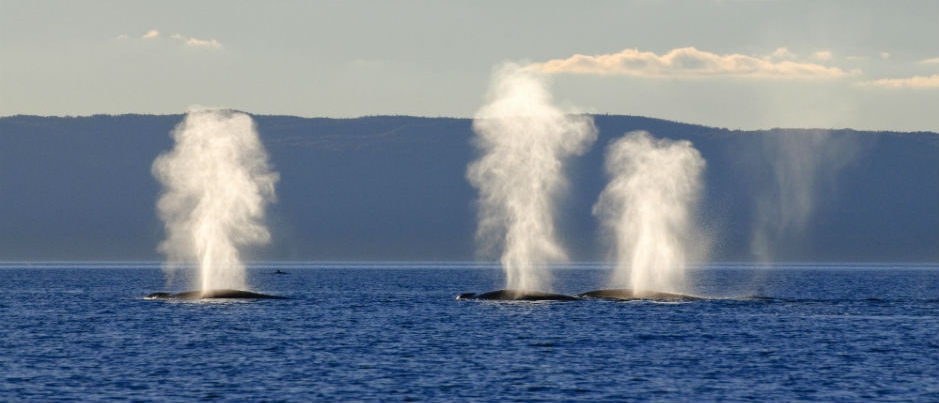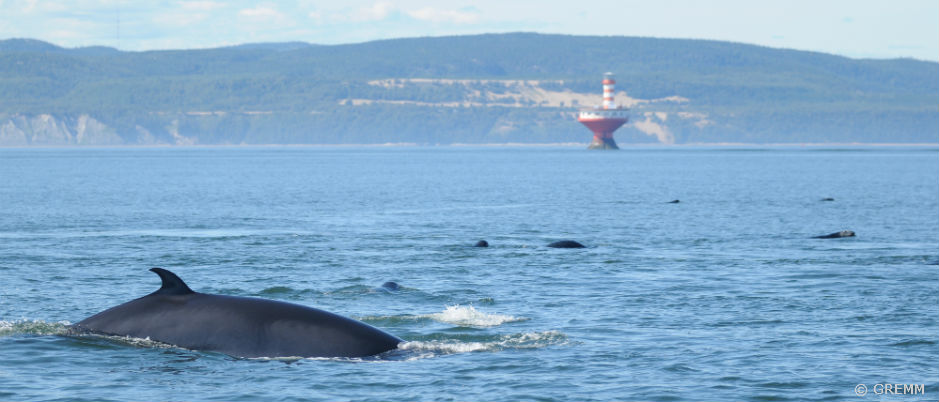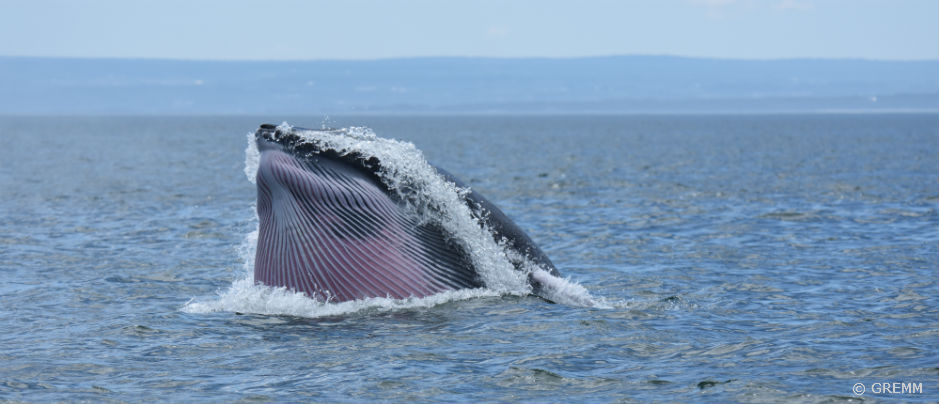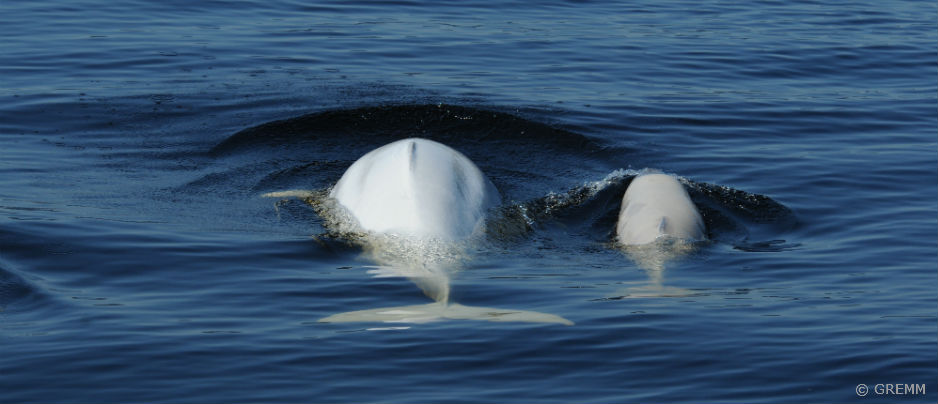The Québec maritime Blog

- Marc Loiselle/Tourisme Côte-Nord – Manicouagan
Why Is the St. Lawrence an Ideal Place to See Whales?
Thousands of whales leave the Atlantic Ocean in the summer to head up the St. Lawrence Estuary. Some even make it all the way up to the mouth of the Saguenay Fjord, thousands of kilometres from their breeding areas. Why? Because the St. Lawrence is teeming with fish and plankton—and what whales mostly do in the summer is eat!
Why is the St. Lawrence such an important feeding ground?

Whales are drawn to the St. Lawrence by the quantity and concentration of prey species it contains. The waterway’s high primary productivity (its ability to generate an abundance of food for many species) is due to an oceanographic phenomenon known as deep-water upwelling. Driven against the current from the Atlantic Ocean towards the Gulf of St. Lawrence, deep salt water is pushed up to the surface by the Gaspé Current. A shoal at the head of the Laurentian Channel, off Tadoussac, also forces deep water to come to the surface under the influence of the tides.
These waters, which are often rich in decomposed organic matter, act as a fertilizer for microscopic algae called phytoplankton. Thanks to the sunlight available at the surface and this nutrient intake, phytoplankton then serve as the first link in a food chain that transforms these surface waters into a giant smorgasbord for marine wildlife: zooplankton, fish, seabirds, seals, whales, etc.
Feeding before fasting

Both baleen and toothed whales take advantage of the food resources in the St. Lawrence to store fat during the summer. Some species, such as humpbacks, fast during breeding season. They must therefore spend the summer months eating enough to be able to migrate south over thousands of kilometres, breed, overwinter, calve their young and swim back to the St. Lawrence the following summer to start the cycle all over again.
Whales in the St. Lawrence therefore spend most of their time feeding! For fin whales, opening their mouths requires a lot of energy. It’s a bit like running with an open parachute! For a mouthful to be energy efficient, it must contain a high concentration of prey species. Fin whales herd krill or small fish such as capelin before feeding—observers can have the privilege of watching these maneuvers from land or on water. The St. Lawrence is an excellent place to observe the antics of the whales!
Belugas

What are beluga whales, which usually live in the Arctic, doing so far south? Belugas have lived in what is now the St. Lawrence for over 10,000 years. At the end of the last ice age, an immense sea was created by the retreating glaciers: the Champlain Sea, which extended from the Great Lakes to the Atlantic Ocean. Belugas lived in those waters, as did walruses, narwhals and other marine mammals, in what has become the St. Lawrence Lowlands, upstream from Québec City and the Ottawa Valley. Land emerged as the sea slowly shrank, but the St. Lawrence belugas stayed. Today, these whales are the only cetacean to live in the St. Lawrence year-round.
Now that you understand the role that the St. Lawrence plays for the whales, what are you waiting for: come and observe these majestic marine mammals in action! You will have many opportunities to admire them while respecting their environment.

(0) comment